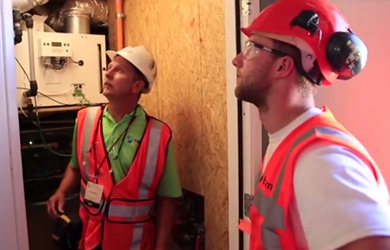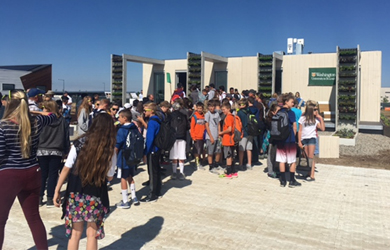The U.S. Department of Energy's Solar Decathlon is now open for exhibition in Denver, Colo., through Oct. 15. Using the latest edition of the International Residential Code (IRC), with amendments only for accessible public tour routes, university students from around the world build and display technologically advanced houses while competing in 10 home energy and livability decathlon contests.
"This is the most technologically advanced, net zero jurisdiction in the U.S.," stated Solar Decathlon Building Official Thomas Meyers. "Some of the features in these houses are at least 10 years in advance of the building code. For example, a prototype of the now off-the-shelf heat pump water heater was constructed on the Washington, D.C., National Mall during the 2007 Solar Decathlon. I think of this event as a living laboratory of life safety and the inspiration for a lot of future code development work."
"As these houses challenge the prescriptive letter of the IRC, they need to be safe for the students and thousands of daily tourists that walk through them during the public exhibit," Meyers continued. "When the 2009 IRC was released, I chose to adopt it for the event with the residential fire sprinkler provisions intact. They design IRC P2904 systems using student-provided, individual rural-type water supply tanks and pumps. It was my opinion that if these students could successfully execute a P2904 system during a temporary exhibit, then there was no excuse for not providing sprinklers in permanent construction."
The 2017 Solar Decathlon includes houses constructed using structural insulated panels, cross laminated timber, light engineered wood products, bamboo and even precast concrete. "Washington University brought a fully precast concrete house in pieces and assembled it here on site for the event," said Meyers. "The walls are comprised of an advance external fiber-reinforced ductile concrete external cladding, 5 inches of continuous foam plastic in the core, and about 3 inches of structural, reinforced concrete on the interior. The panels are extremely strong and very efficient due to the combination of continuous insulation with substantial thermal mass oriented to the interior."
The 11 houses are constructed by university teams from the United States, Switzerland and the Netherlands. Upon completion of the event, the houses will be removed and placed in permanent locations around the world. For more information on the 2017 Solar Decathlon, visit www.solardecathlon.gov/.
Thomas Meyers, CBO, is the president of Building Intuition, LLC and past chairman of the IRC Building and Energy Committee. He served as the Solar Decathlon building official since 2004 and has administered building code safety programs using the ICC International series of model codes worldwide. He currently resides in Western Colorado where he is building his own net zero, 2018 IRC-compliant house.
|




